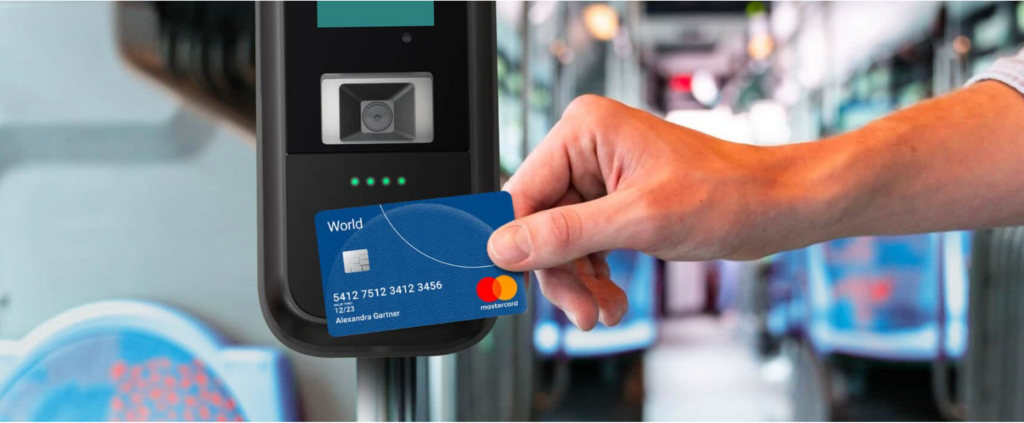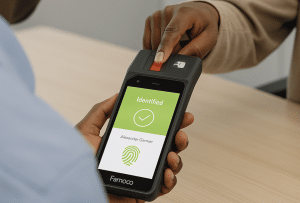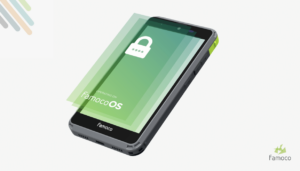The digital revolution is accelerating and simplifying the habits of consumers as well as passengers in public transportations with increasingly connected vehicles. Open payment turns out to be the first choice solution to answer this growing demand for connectivity and optimization of our daily means of transports.
About the Open payment technology
Following its launch by Transport of London in 2014, open payment had a dazzling success with its 1 million users during the first week; success that continually increased when 50% of the payments of travel tickets were made with open payment throughout the London network. In 2018, contactless card payment exceeded the number of validations with the Oyster Card (London transport pass), a fact that shows the quick adoption of this technology by its users.
So what is the open payment ?
A concept that exploded with its introduction in London’s public transports, open payment took shape with the creation and the diffusion of the NFC technology in our smartphones and payment cards. The system of open payment therefore consists in tapping one of the two payment methods on a terminal which will process the transaction in a few seconds.
“Contactless payments have completely transformed the way people pay for travel in London and it’s great to see more than 1 billion journeys now made across the Capital’s transport network”, Shahi Verma, Chief Technology
Officer at Transport of London
How does it work ?
- The user starts by a tap-in on the validator with his payment card or his smartphone equipped by the NFC technology
- The validator generates a token, then collects and encrypts the payment information
- The token and the collected information are then sent to an acceptance server
- The tap is sent to an open payment server with different information : the token generated at the tap, the date, the hour and the place of tap and multiple information on the used transport line
- Following taps, made during the traveler’s journey, will once again generate tokens which will be sent to the open payment server
- At the end of the day all the taps are analysed to create a map of the user’s journey, which will allow to set a price based on the use of transports
Why should transport operators adopt open payment quickly?
Between ride-hailing, carpooling and self-service electric scooters and bicycles, urban users are seeing their transport methods diversify exponentially these last years. With a growing population in these urban areas, the ease and fluidity of mobility become a crucial issue — for example, 2025 will account for almost 82% of the French population living in urban areas. Confronted with this, public transports, such as trains, subways, buses or trams, must be innovative and adapted to the needs of users : simplicity and speed become the keywords and open payment meets this.
Whether it be for the users or the public transport operators, open payment gives a lot of advantages :
- For the users :
- Public transports pricing becomes fair as they are based on the frequency and the distance of their uses. An occasional user will not have to pay a weekly or a monthly pass for only two journeys over these periods
- Travels are improved because there will be no more needs to wait at the ticket office or at the ticket machines
- Public transports become simpler and more accessible, especially for tourists who will be less confused on their use
- For public transport operators :
- Open payment can reduce frauds. Since the implementation of this system in 2018 at Dijon (France), the public transports operator Keolis would have obtained 30% more revenue, including 10% from the fight against fraud
- The number of ticket offices and ticket machines will be considerably reduced because there will be no more need to distribute transport tickets.
Moreover, bus drivers will no longer have to handle ticket purchase transactions as they will be automated. Travellers will see themselves more and more autonomous !
- With a usage-based pricing, this system will attract new casual customers who are not used to pay tickets or subscriptions
- And of course it will give a fresh and innovative image to the company
Which countries have adopted open payment today ?
Since its launch in 2014 in London, open payment has been introduced in several countries across the world.
- In the Asian continent we can already count Japan, Singapour, Shanghai and Beijing who developed this technology in recent years. Given that many digital payment and validation systems have been democratized in China (such as the QR code), the use of open payment has been developed very quickly
- The American continent isn’t put aside since we can find open payment in Canada, in the U.S. and also in Brazil where the Rio subway users do not have to pay tickets anymore to get around
- France launched this system in Dijon, Dreux and Chartres. We also know that projects are in preparation in Lyon, Bordeaux and Grenoble
Today open payment takes a major place in the public transport field. Facing the diversification of displacement means (ride-hailing, carpooling…) transport operators have to adapt to the increasing demands of travellers connectivity, open payment would then fill this need thanks to its democratization in the world.
With the arrival of this new market we decided to design and launch the FX925 Pay&Pass. Contactless cards, smartphones, smartwatches and even barcodes, this smart validator will accept all kinds of travel passes. So catch the train of open payment with our FX925 validator !



